|
|
|
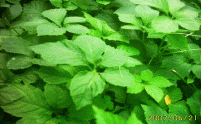
|
Jiaogulan
STUDY CAUSE
|
Jiaogulan Herb
Prescription Drug Information for Consumers &
Professionals

Jiaogulan
Scientific Name(s): Gynostemma pentaphyllum (Thunb.)
Makino. Family: Cucurbitaceae (Squashes)
Common Name(s): Jiaogulan , Penta tea , Amachazuru
(Japan) , Southern ginseng , Dungkulcha (Korea)
Clinical Overview
Uses of Jiaogulan
Studies on Gynostemma have found that the plant is
effective in regulating blood pressure,
strengthening the immune system, lowering
cholesterol, and in increasing stamina and
endurance properties. Gynostemma has also been
found to have hyperlipidemic, lipid peroxidation,
adaptogenic, anticancer, cardio- and
cerebrovascular effects.
Jiaogulan Dosing
The adaptogenic use of jiaogulan is standardized
on an extract containing 85% gypenosides, with a
daily dose of 60 to 180 mg gypenosides recommended;
however, published studies to justify this dose
are lacking.
Contraindications
Contraindications have not yet been identified.
Pregnancy/Lactation
Information regarding safety and efficacy in
pregnancy and lactation is lacking.
Jiaogulan Interactions
None well documented.
Jiaogulan Adverse Reactions
The side effects of Gynostemma include severe
nausea and increased bowel movements.
Toxicology
No data available for human toxicity.
Botany
Gynostemma pentaphyllum is a climbing, perennial
vine native to China, Japan, and parts of
southeast Asia. The plant is dioecious, that is,
it carries male and female flowers on separate
plants. While the plant grows abundantly and is
harvested from the wild, it has been brought under
cultivation and tissue culture has been achieved.
1 , 2 , 3 , 4 Adulteration by Cayratia japonica
has been noted. 3
History
Jiaogulan has been incorporated into traditional
Chinese medicine only in the last 20 years. The
plant has a history of folk use in the Guizhou
province in China. Its properties are said to have
been investigated when a Chinese census revealed a
large number of elderly people in the province
reported using the plant. Investigation as a
potential sweetening agent stimulated chemical
investigations in Japan. Commercialization and
scientific study of the leaves have been promoted
by provincial Chinese authorities, and the
discovery that several ginseng saponins occur in
the leaves has prompted aggressive promotion of
the product as a substitute for ginseng. The
appearance of jiaogulan in American commerce has
been heralded by publication of a popular book. 5
Chemistry
A large series of dammarane triterpene saponins,
gypenosides 1-82, have been isolated from the
leaves, principally by Takemoto's group. 6 , 7 , 8
, 9 , 10 , 11 , 12 , 13 , 14 Several of these
saponins are identical to those found in ginseng.
Specifically, gypenoside 3 is identical to
ginsenoside Rb1, gypenoside 4 is identical to
ginsenoside Rb3, gypenoside 8 is identical to
ginsenoside Rd, and gypenoside 12 is identical to
ginsenoside F2. Many of the other gypenosides are
closely related structurally to the ginsenosides
and include the 6′-malonyl derivatives
characteristic of ginseng. 15 The content of
saponins is comparable to that of ginseng roots.
However, wide variation in the amount and nature
of gypenosides has made production of a product
standardized with specific gypenosides somewhat
problematic. Most current products are
standardized on total saponin content. The reasons
for this variation have been investigated but have
not been fully elucidated.
Other constituents reported from Gynostemma
pentaphyllum include sterols with the ergostane,
cholestane, and stigmastane skeletons, 16 , 17 ,
18 , 19 , 20 with several examples containing an
acetylenic functionality, which is considered
unusual in plants. 21 The flavonoid glycosides
rutin, ombuoside, 22 and yixingensin 23 , 24 have
also been identified.
The related species G. compressum Chen and Liang
have yielded dammarane saponins related to the
gypenosides. 25
Jiaogulan Uses and Pharmacology
Though the plant contains ginseng and ginseng-like
saponins, it has not been reported to contain the
other types of biologically active compounds,
acetylenes, and polysaccharides found in ginseng.
Thus, while ginseng pharmacology presents a
reasonable starting point for investigation,
jiaogulan cannot be considered as
pharmacologically identical to ginseng.
Hyperlipidemia
Animal data
Oral administration of a gynostemma decoction in
combination with Nelumbo nucifera and Crataegus
cuneata was found to lower triglycerides and
cholesterol in rats and quail. However, a dose
response was not demonstrated. 26 Administration
of an aqueous extract of the whole plant to rats
in chow over 12 weeks resulted in a reduction in
serum levels of total cholesterol and beta-lipoproteins.
27 A second study in mice and rats given 200 mg/kg
PO of the crude saponin demonstrated lower total
cholesterol (TC) and VLDL but increased HDL/LDL.
28
Clinical data
A clinical study of hyperlipoproteinemic subjects
also found a decrease in TC with increased HDL/TC
at a dose of 10 mg given 3 times daily for 30
days. 29 A study of 105 patients confirmed these
effects. 30
Lipid peroxidation
Animal data
An antioxidant effect of gypenosides was reported
in phagocyte, endothelial cell, and liver
microsome systems. 31 Further study by the same
group 32 explored these effects in vascular
endothelial cells injured by hydrogen peroxide.
Rat microsome studies also have found similar
effects for crude gypenosides. 33
Clinical data
Research reveals no clinical data regarding the
use of jiaogulan for lipid peroxidation.
Adaptogenic
Despite the wide reputation of ginseng as an
adaptogen, few studies of jiaogulan have been
published on the topic.
Animal data
Chen 34 found an increased tolerance to fatigue in
forced swimming and hanging models in mice, and
enhanced tolerance to anoxia, along with
potentiation of pentobarbital hypnosis.
Clinical data
Research reveals no clinical data regarding the
use of jiaogulan as an adaptogen.
Cardio- and cerebrovascular effects
Animal data
The hot water extract of Gynostemma pentaphyllum
was found to activate platelet aggregation.
However, the active principle was not elucidated.
35 Gypenosides inhibited platelet aggregation in
another study. 36 In rabbits, crude gypenosides
decreased heart rate, increased stroke volume,
dilated blood vessels, and reduced blood pressure
while slightly increasing cardiac output. 37
Purified gypenosides 5 and 10 were found to lower
systolic and diastolic blood pressure, decrease
coronary, brain, and peripheral blood vessel
resistance, raise coronary flow, and lower heart
rate in dogs. 38 Crude gypenosides protected
against cerebral ischemic damage in a rabbit
model. 39
Clinical data
Research reveals no clinical data regarding the
use of jiaogulan for cardio- and cerebrovascular
effects.
Cancer and immunologic effects
Animal data
An extract of Gynostemma inhibited the growth of a
rectal adenocarcinoma cell line, 40 while total
gypenosides inhibited growth of A549, Calu 1, and
592/9 carcinoma cells more potently (1 to 10 mg/L)
than Hela and Colo 205 cells. 41 Both callus and
field grown Gynostemma increased the lifespan of
mice bearing Ehrlich's ascites carcinoma, an
effect attributed to immune enhancement. 42 Crude
gypenosides also had activity versus S-180 cells
both in vitro and in vivo. 43 Gypenosides
protected against cyclophosphamide-induced bone
marrow and spermatozoal mutagenesis when given
orally at 40 to 160 mg/kg to mice. 44 Similar
treatments enhanced immune function in another
report. 45
Clinical data
Cancer patients given jiaogulan granules after
chemotherapy showed improved immune function by
several endpoints. 46
Other
Experimental senility in mice induced by D-galactose
was attenuated by intraperitoneal (IP) injection
of Gynostemma aqueous extract. 47
Dosage
The adaptogenic use of jiaogulan is standardized
on an extract containing 85% gypenosides, with a
daily dose of 60 to 180 mg gypenosides recommended;
however, published studies to justify this dose
are lacking.
Pregnancy/Lactation
Information regarding safety and efficacy in
pregnancy and lactation is lacking.
Interactions
None well documented.
Adverse Reactions
Side effects reported in clinical studies included
severe nausea and increased bowel movements. 48
Toxicology
The LD50 in mice for the aqueous extract has been
reported as 2.8 g/kg IP. However, LD50 for the
oral route could not be determined. 34 Another
study found an oral LD50 of 49 g/kg for the crude
extract with no organ toxicity at 4 g/kg daily for
90 days. 49 A third study of two different
extracts found an LD50 of 1 to 2 g/kg IP in mice.
50 A rat LD50 of 1.9 g/kg IP has also been
reported. 34
Bibliography
1. Zhang ZH, et al. Propagation of Gynostemma
pentaphyllum by tissue culture. China J Chinese
Materia Medica . 1989; 14(6):33536.
2. Liu X, et al. Tissue culture and plantlet
regeneration of Gynostemma pentaphyllum . Journal
of Chinese Medicinal Materials . 1989;
12(6):810.
3. Wu M, et al. Pharmacognosy of Gynostemma
pentaphyllum and Cayratia japonica . Zhongyaocai .
1987; (4):2225.
4. Ding S, et al. Pharmacognostical study of
Gynostemma (Cucurbitaceae) in China. Chinese
Pharmaceutical Journal . 1994; 29(2):7983.
5. Blumert M, et al. Jiaogulan ( Gynostemma
pentaphyllum ) China's immortality herb. Badger,
CA: Torchlight Publishing, 1999.
6. Nagai M, et al. Two glycosides of a novel
dammarane alcohol from Gynostemma pentaphyllum .
Chem Pharm Bull . 1981; 29(3):77983.
7. Takemoto T, et al. Studies on the constituents
of Gynostemma pentaphyllum Makino. I. Structures
of gypenosides. I-XIV. Yakugaku Zasshi . 1983;
103:173.
8. Takemoto T, et al. Studies on the constituents
of Gynostemma pentaphyllum Makino. II. Structures
of gypenosides. XV-XXI. Yakugaku Zasshi . 1983;
103(10):101523.
9. Takemoto T, et al. Studies on the constituents
of Cucurbitaceae plants. XI. On the saponin
constituents of Gynostemma pentaphyllum Makino.
Yakugaku Zasshi . 1984; 104(10):104349.
10. Takemoto T, et al. Studies on the constituents
of Cucurbitaceae plants. XII. On the saponin
constituents of Gynostemma pentaphyllum Makino.
Yakugaku Zasshi . 1984; 104(11):115562.
11. Takemoto T, et al. Studies on the constituents
of Cucurbitaceae plants. XIV. On the saponin
constituents of Gynostemma pentaphyllum Makino.
Yakugaku Zasshi . 1986; 106(8):66470.
12. Yoshikawa K, et al. Studies on the
constituents of Cucurbitaceae plants. XV. On the
saponin constituents of Gynostemma pentaphyllum
Makino. Yakugaku Zasshi . 1986; 106(9):75863.
13. Yoshikawa K, et al. Studies on the
constituents of Cucurbitaceae plants. XVI. On the
saponin constituents of Gynostemma pentaphyllum
Makino. Yakugaku Zasshi . 1987; 107(4):26267.
14. Yoshikawa K, et al. Studies on the
constituents of Cucurbitaceae plants. XVII. On the
saponin constituents of Gynostemma pentaphyllum
Makino. Yakugaku Zasshi . 1987; 107(5):361.
15. Kuwahara M, et al. Dammarane saponins of
Gynostemma pentaphyllum Makino and the isolation
of malonylginsenosides-Rb1, Rd, and
malonylgypenoside V. Chem Pharm Bull . 1989;
37(1):13539.
16. Akihisa T, et al. 14α-methyl-5α-ergosta-9(11),24(28)-dien-3β-ol,
a sterol from Gynostemma pentaphyllum .
Phytochemistry . 1987; 26(8):241213.
17. Akihisa T, et al. 24,24Dimethyl-5α-cholestan-3β-ol,
a sterol from Gynostemma pentaphyllum .
Phytochemistry . 1988; 27(9):293133.
18. Akihisa T, et al. 24,24Dimethyl-5α-cholest-8en3β-ol,
a new sterol from Gynostemma pentaphyllum .
Yukagaku . 1988; 37(8):65962.
19. Akihisa T, et al. (24R)-and (24S)-14α-methyl-5α-ergost-9(11)-en
3β-ols from Gynostemma pentaphyllum .
Phytochemistry . 1989;28(4):127173.
20. Akihisa T, et al. 4α, 14α-dimethyl-5α-ergosta-7,9(11),24(28)trien-3β-ol
from Phaseolus vulgaris and Gynostemma
pentaphyllum . Phytochemistry . 1990;
29(5):164751.
21. Akihisa T, et al. Isolation of acetylenic
sterols from a higher plant. Further evidence that
marine sterols are not unique. J Org Chem . 1989;
54:60610.
22. Hu L, et al. Dammarance-type glycosides from
Gynostemma pentaphyllum . Phytochemistry . 1997;
44(4):667.
23. Fang Z, et al. Isolation and identification of
flavonoids glycosides and organic acids from
Gynostemma pentaphyllum . China J of Chinese
Materia Medica . 1989; 14(11):67678.
24. Si J, et al. Isolation and identification of
flavonoids from Gynostemma yixingense . Zhiwu
Xuebao . 1994; 36(3):239.
25. Ding S, et al. Gycomoside I: a new dammarane
saponin from Gynostemma compressum . Planta Med .
1993; 373.
26. La Cour B, et al. Traditional Chinese medicine
in treatment of hyperlipidaemia. J Ethnopharmacol
. 1995; 46:12529.
27. Geng W, et al. Effects of Gynostemma
pentaphyllum extract on T-lymphocyte and lipid
metabolism in rats. Guangxi Med J . 1988;
10(1):89.
28. Dai H, et al. Effects of the total saponin of
Gynostemma pentaphyllum on lipoproteins. Chinese
Tradit Herbal Drugs . 1989; 20(4):17273.
29. Hu X, et al. Antilipemic effect Gynostemma
pentaphyllum in patients. Fujian Medical Journal .
1988; 10(5):46.
30. Zhou H, et al. Treatment of hyperlipidemia
with Gynostemma pentaphyllum Jiaogulan. Hunan Med
J . 1991; 8(5):25960.
31. Li L, et al. Protective effect of gypenosides
against oxidative stress in phagocytes, vascular
endothelial cells, and liver microsomes. Cancer
Biother . 1993; 8(3):263272.
32. Li L, et al. Protection of vascular
endothelial cells from hydrogen peroxide-induced
oxidant injury by gypenosides saponins of
Gynostemma pentaphyllum . Phytother Res 1993;
7(4):299304.
33. Li L, et al. Protective effects of gypenosides
on rat hepatic lipid peroxidation and membrane
fluidity damage: in vitro studies. Chinese Pharm
Bull . 1991; 7(5):34144.
34. Chen J, et al. Antistress action of Gynostemma
pentaphyllum . Chinese Tradit Patent Med . 1989;
11(1):3132.
35. Takagi J, et al. A new platelet aggregation
factor from Gynostemma pentaphyllum Makino. Chem
Pharm Bull . 1985; 33(12):556871.
36. Wu J, et al. Effects of gypenosides on
platelet aggregation, release, and cAMP level in
rabbits. Chinese J Pharmacol Toxicol . 1990;
4(1):5457.
37. Li Y, et al. Effects of total gypenosides on
heart function and blood pressure of rabbits. Acta
Academiae Medicinae Shandong . 1990;
28(3):3436.
38. Chen L, et al. Comparison between the effects
of gypenosides and ginsenosides on cardiac
function and hemodynamics in dogs. Chinese J
Pharmacol Toxicol . 1990; 4(1):1720.
39. Wang Z, et al. Protective effect of gypenoside
on acute incomplete cerebral ischemia in rabbits.
Chinese J Pharmacol Toxicol . 1992; 6(3):20406.
40. Jin M, et al. Effects of extract of Gynostemma
pentaphyllum on human rectal adenocarcinoma cell.
Modern Applied Pharmacy . 1992; 9(2):4952.
41. Liu H, et al. Suppression effects of
gypenosides on cultured human carcinoma cells.
Journal of Xi'an Medical University . 1994;
15(4):34648.
42. Wang Z, et al. Inhibitory effect of Gynostemma
pentaphyllum on Ehrlich's ascites carcinoma. Tumor
. 1990; 10(6):24649.
43. Wang Y, et al. Antineoplastic action of
gypenosides. Chinese J Integrated Tradit Western
Med . 1988; 8(5):286.
44. Wang Y, et al. Effects of gypenosides on
mutagenesis induced by cyclophosphamide in mice.
Chinese Pharmacol Bull . 1994; 10(6):45759.
45. Tong K, et al. Immunological effects of
Gynostemma pentaphyllum in mice. Jiangsu Journal
of Traditional Chinese Medicine . 1989;
(4):18486.
46. Wang J, et al. Immunological effects of
jiaogulan granule in 19 cancer patients. Zhejiang
Journal of Traditional Chinese Medicine . 1989;
24(10):449.
47. Xu F, et al. Anti-aging actions of Gynostemma
pentaphyllum and its compound formula. Chinese
Tradit Patent Med . 1989; 11(5):2930.
48. Chen Z, et al. Progress in the research on the
pharmacology of Gynostemma pentaphyllum . Journal
of Chinese Medicinal Materials . 1989;
12(6):4244.
49. Li R, et al. Chemical and pharmacological
studies on Gynostemma pentaphyllum . Journal of
New Chinese Medicine . 1988; 20(4):5153.
50. Liu X, et al. Pharmacological studies on the
total saponin of Gynostemma pentaphyllum from
Guangxi. Chinese Tradit Patent Med . 1989;
11(8):2729.
THANK YOU DRUG.COM FOR ALL INFORMATION
MORE INFORMATION PLEASE VISIT


|
| |
|
|
| |
|
Jiaogulan
Products

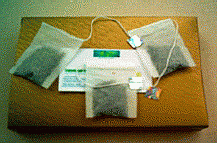
Jiaogulan Tea Bag
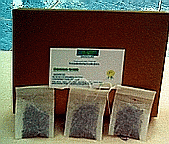
Jiaogulan
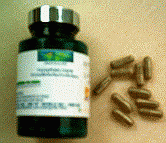
Jiaogulan Capsules
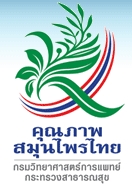
Jiaogulan
| |


JIAOGULAN
BY GOOGLE
JIAOGULAN
BY ALL THE WEB
JIAOGULAN
BY AOL
JIAOGULAN
BY GIGABLAST
JIAOGULAN
BY MSN
JIAOGULAN
BY YAHOO
JIAOGULAN
BY NETSCAPE
JIAOGULAN
BY SEARCH
JIAOGULAN
BY DOGPILE
JIAOGULAN
BY ASK
JIAOGULAN
BY ALTAVISTA
JIAOGULAN
BY LIVE SEARCH
JIAOGULAN
BY MAMMA
JIAOGULAN
BY WEBCREWLER
JIAOGULAN
BY CLUSTY
JIAOGULAN
BY ALLTHEWEB
JIAOGULAN
BY LYCOS
JIAOGULAN
BY TEOMA
JIAOGULAN
BY A9
JIAOGULAN
BY SEARCH THAI
JIAOGULAN
BY SANOOK